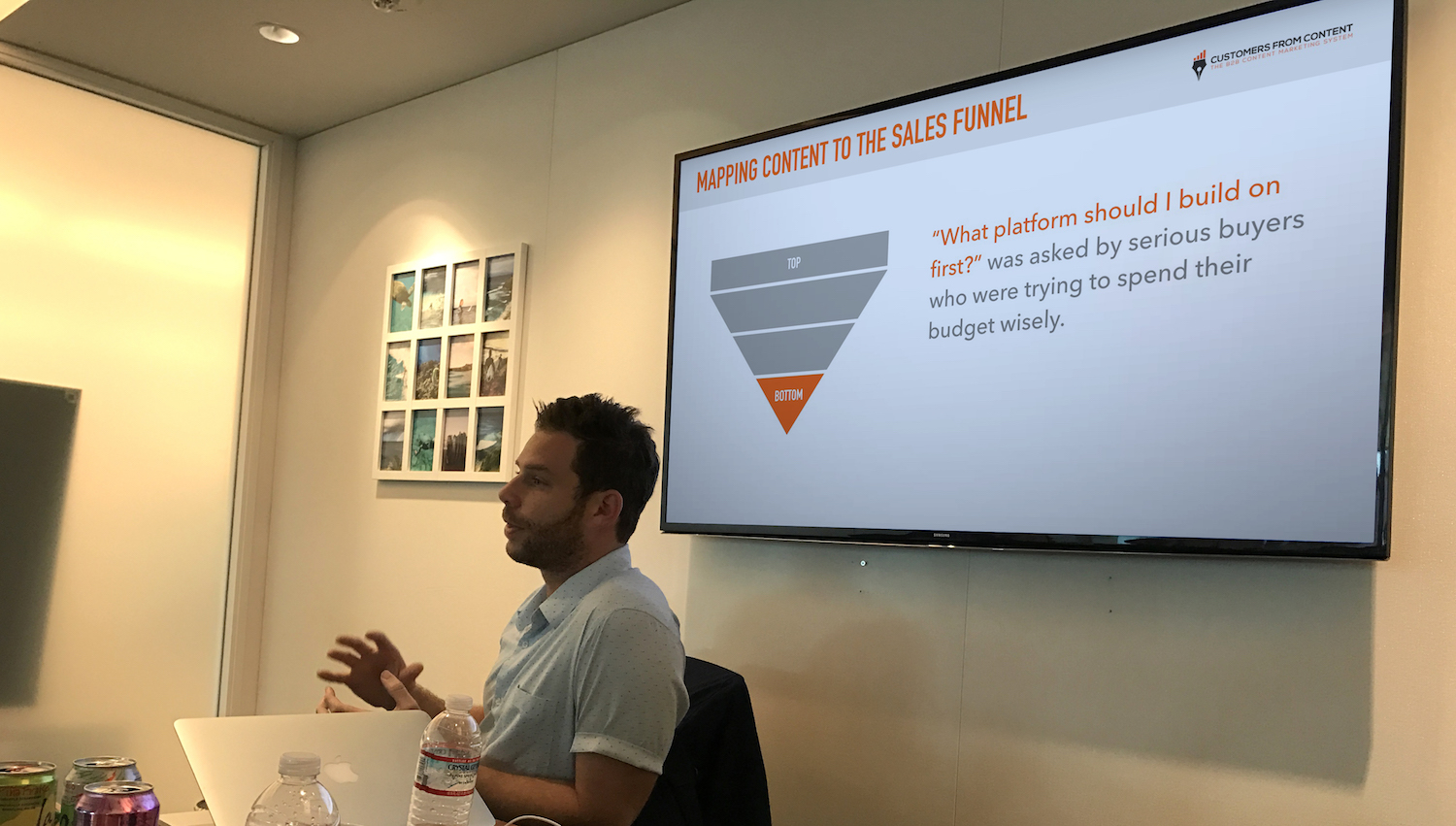We recently worked with a company that is looking to attract engineering and IT executives at enterprise companies. They’re selling highly technical development services to them.
These target customers are essentially, executives. They make important decisions for huge websites like “What backend architecture should we use?” and “Is our tech stack preventing us from hiring top talent?”. They get paid a lot. They manage huge teams. They are important, busy people.
The company’s existing blog posts, though, had titles like:
- 21 useful javascript tips and tricks…
- 7 things to stop doing with jquery
- 10 bootstrap alternatives
Do you see the problem? No IT executive is looking for jquery tips. They are not coding in their job. They haven’t written code for years.
This is not an isolated problem.
For example:
A high end, UI/UX design firm said some of their previous content included things like a “website launch checklist”. The only problem is that their ideal contracts are $100,000+ from multi-million dollar companies with a serious digital presence. Their management teams don’t need to learn how to launch a website.
A B2B SaaS company we worked with had a solution to help enterprise CMOs at medium to enterprise companies get more testimonials. Their existing content included tips about how surveying customers is “important”. The problem? Their target customers came to them because they knew customer feedback was important, they just needed help getting more. They don’t need to be told that testimonials are important.
If you’re the marketing executive or founder, this misalignment problem is mentally and emotionally exhausting. You’re working your tail off producing content month after month. From ideating, to writing, to graphics, to promotion- it’s all a lot of work. So when the management team asks you “How many customers are we generating from our content marketing efforts?”, it can feel like you want to throw something at a wall.
It’s infuriating. We’ve been there.
Introducing “Content-Customer Fit”
We’ve seen this problem so often, across so many industries, that we’ve decided we need to formalize this issue.
We’re calling this concept: Content-Customer Fit.
The above examples are from companies that haven’t achieved content-customer fit. They have content. Their content may be really good, but that’s irrelevant. The problem is that isn’t written for their customers.
So they don’t have a fit.
We define a “working” content operation as driving useful leads or sales for the business
And without content-customer fit, their content marketing operation isn’t going to “work”, which we define as driving useful leads or sales for the business. We don’t even care if it gets traffic or not. One of the examples above is from a blog that got less than 1000 visitors, another gets over 200,000 a month. It doesn’t matter, in both cases, the company decided to work with us because the blog wasn’t producing enough (or sometimes, any) useful leads.
That’s why content-customer fit is so important.
This term is, of course, a nod to “product-market fit”, which, I’m sure you’ve heard a million times. To pause and give credit where it’s due, according to Wikipedia “product-market fit” was defined or popularized by some combination of Marc Andreessen, Sean Ellis, and Steve Blank. In other words, some highly accomplished startup folks have endorsed (or created) it.
There are clear analogies between customer-content fit and product-market fit:
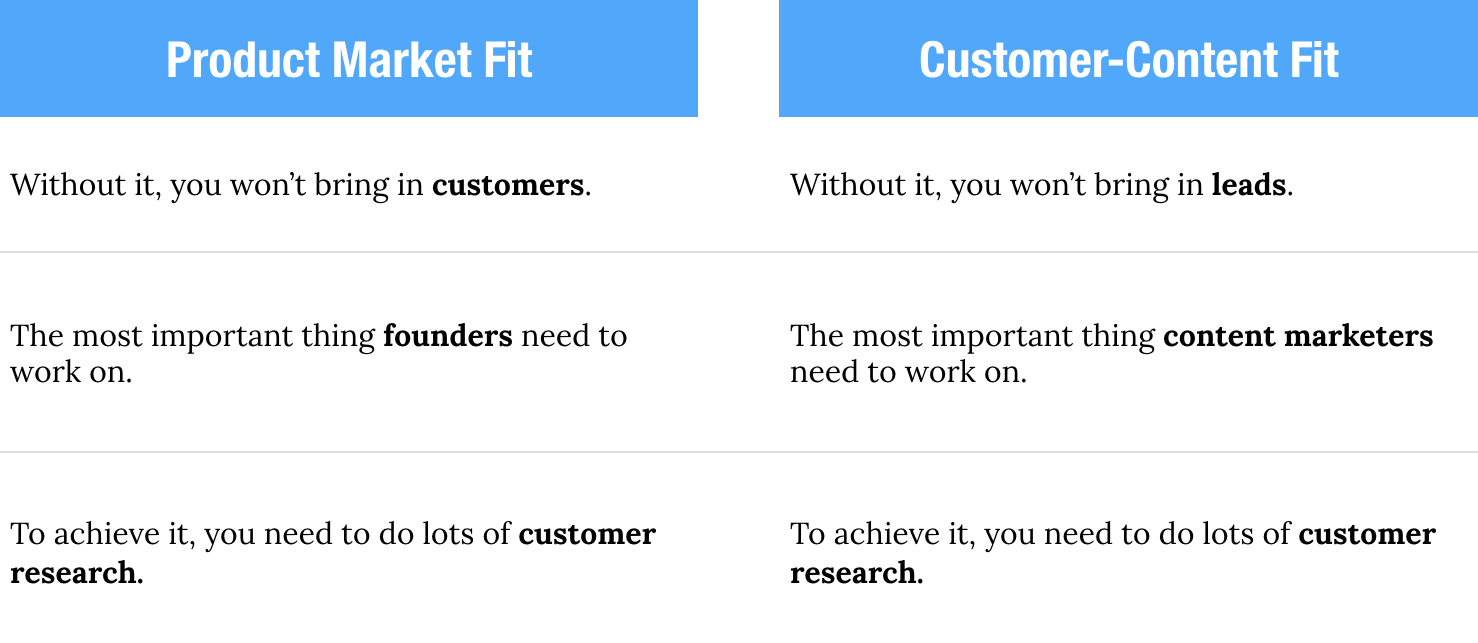
So, let’s discuss the 3rd item, how to achieve content-customer fit. Then we’ll look at a before and after example.
Curious about having us do content marketing for your business? You can learn more here. If you’d like to learn the content marketing strategy that we share here, we also teach our content marketing process in our course and community.
Step 1 to Achieving Content-Customer Fit: Extensive Customer Research
Steve Blank, one of the “product-market fit” gurus according to Wikipedia has this famous line:
Get out of the building.
He means startup founders need to start by talking to customers, a lot, over and over, before they start building.
That’s exactly how we approach achieving content-customer fit for ourselves and our clients.

Step 1.1: Getting the right people in the room
Marketers typically don’t have direct contact with customers.
When we start working with a company, the first thing we do is an intensive user research session. It’s typically a half day at their office.
The session is conducted with way more than the marketing team. We usually bring in C-level staff, someone from the sales development team, account executive team (if there’s a sales org), customer support/account management team (if there is one), and any other employees that have direct contact with, or extensive knowledge of, the customer.
The reason is simple, marketers often don’t have direct contact with customers (sorry, but we’re finding that to be true), so we don’t want filtered or “best guess” info, we want it straight from the people who talk to customers every day.
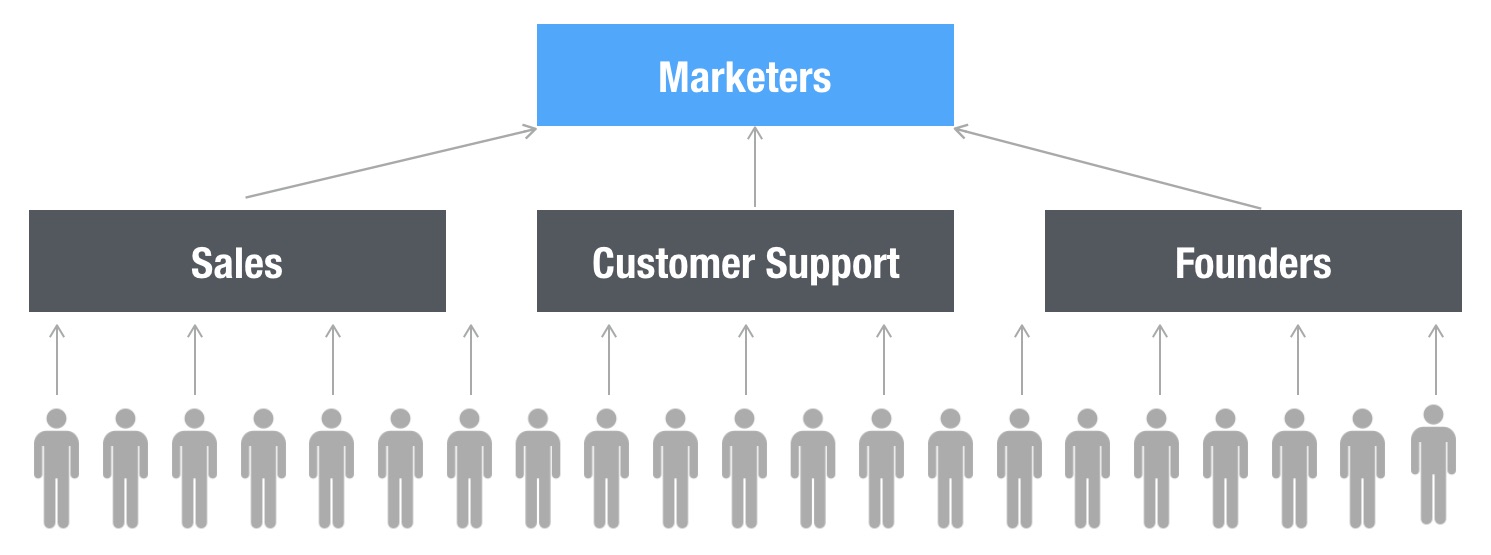
Step 1.2: Identify the best customer, not just any customer
Then we’ll pull up the company CRM for quantitative data analysis and sort by 3 key metrics:
- Account Value – the price the customer pays the company
- Sales Cycle – how long it took an account to close
- Retention- how long the customer has been with the company
For service businesses, we’ll also ask the account managers which companies were the most enjoyable to work with.
We’re looking to figure out who the absolute best, most ideal, if-you-could-wave-a-magic-wand customers are for this company.
On the quantitative side, from CRM data, we begin to understand which companies have a high contract value, had a short sales cycle and have stayed with the company a long time. A customer that checks all 3 boxes is typically a great fit. We prioritize those companies.
Then on the qualitative side, we get evidence from the stakeholders about their views on their customers. We ask questions like this to these different stakeholders:
Account management/ customer success
- Which of your customers see a ton of value in the product or service that you offer?
- Which are the customers that you’ve never had any issues with?
- Which of your customers do you think are the best fit for the company?
Sales
- Which of the accounts that you closed in the last 6 months to a year were the easiest to close, and why?
- Which accounts had a huge pain point that your company solved for?
- What were those pain points?
Marketing
- Which leads had the highest chance to convert to an opportunity?
We get into a lot more detail and the conversations go in different directions depending on the company, but you get the idea.
Step 1.3: Consolidate and Analyze the Data
Then after going through this exercise, we compile the list of companies and do demographic research to figure out who the buyer in these companies were, and what similarities they share.
For example:
- Did the buyers have similar titles?
- Did the companies that came up multiple times have similar revenue ranges? Employee counts?
- What industries were these companies in?
At this point we have a pretty damn good understanding of who. That is, who are the company’s best customers. We often start with a long list of potential customers, and narrow it down to a small example list of ideal customers.

We are now are at a key milestone: We have the foundation to create a content strategy that is designed to target a specific group of ideal customers — not just any customer. These are customers that are easier to convert, fun to work with, pay the most, and churn the least.
But, we can’t start creating content yet. We have one absolutely critical step left.
Step 1.4: Learn everything about these ideal customers’ pain points
After we’ve narrowed down a massive list of any random customer that may give us money down to the very best, we then try to learn everything we can about these companies/people that purchased.
For example:
- What were the problems the company was facing prior to them working with you?
- How were those problems solved once they started working with you?
- What other problems/challenges do these people face in their roles outside of the problem your company solves for them?
- What publications do these people read? Who do they look up to in your industry?
Usually, the company we’re working with doesn’t know how their customers would answer these questions. (In particular, the last question.) So getting answers to these questions usually requires ongoing customer research on our part: emails, surveys, looking at customers service chats, talking to more people at the company.
We also have a much longer list of questions, above is just an example set. Some more questions are discussed in this user research surveying article, and with clients we create a bunch more, custom, questions.
Overall, this is a crucial step and the techniques are varied. I’m glossing over this in this article for sake of space but we go through it in detail in our course and with our clients. This step requires some creativity, and in previous articles we’ve harshly (but, in my opinion, correctly) just said:
“You’re a marketer. This is your job. Figure out how to get it done.”
After this step we’ve now figured out who the absolute best, most ideal customers are based off of real data instead of a marketers’ hunch (so our content strategy becomes focused instead of scattershot).
Now we can finally move on to content creation.
(This is analogous to a startup founder doing enough customer research to release their MVP in their quest for product-market fit.)
Creating Content That Attracts Customers
It’s kind of neat that once you do all of the user research steps above, ideating on content is not that complicated.
Think about it:
- You’ve narrowed the full customer list down to a subset based on actual data. Most companies just write for anyone in their general field.
- You’ve talked to multiple stakeholders in the company to make sure your reasoning and conclusions are sound. Most employees work in silos.
- You’ve then started uncovering pain points by actually talking to real customers. Most marketers just assume.
So now you just create content pieces that address the actual pain points you’ve uncovered for these ideal customers.
In terms of making the content good, we’ve talked about that at length in several places (the curious reader can find even more in the content strategy section of our top content page):
- Specificity Strategy – Don’t blow it by making a single article’s topic too broad.
- Blog Introductions – Don’t blow it by having a terrible introduction
- Map to the Sales Funnel – Higher level strategy of strategically creating content to attract buyers at different buying stages
The best way to see all of this put into action is through an example.
If you’re finding this post valuable, you’ll love our course. We go in even more depth about how to conduct user research and identify high converting blog topics. We also cover writing great blog posts, driving traffic to them, and more. Learn more about our course here.
A Change In Strategy Based off of this Approach
We gave a workshop to the VC firm FundersClub back in December and were lucky enough to have their VC partners as well as some of their portfolio companies in the room.
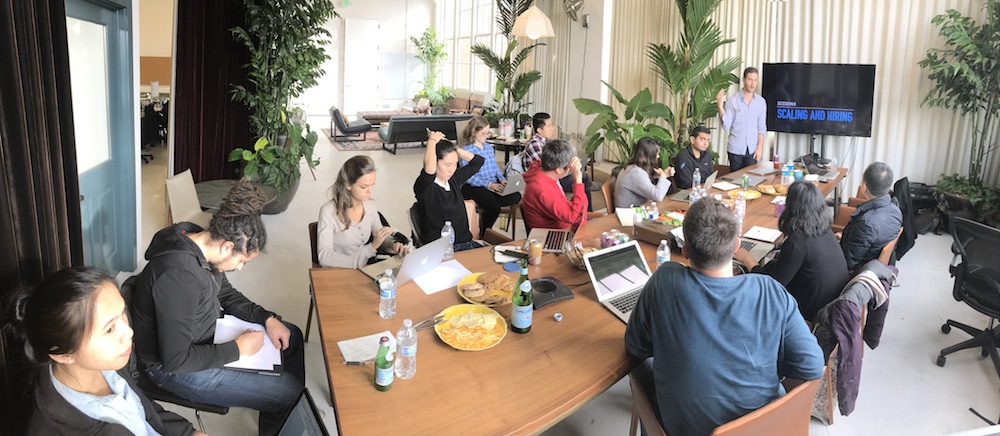
Giving a workshop at Fundersclub in front of VCs and founders.
For those that aren’t familiar with Fundersclub, they’ve funded over 200 startups with names you might recognize such as: Instacart, Coinbase, Teespring, LeadGenius, RankScience, etc. They typically fund early investments in the Seed and Series A rounds.
We ran through the best customer exercise with them and determined that the best companies for them to fund were:
- Serial Founders
- Had participated in the top incubators (YC, 500 Startups, Techstars, etc.)
- Had previously raised a seed or angel round of funding
- Showed significant traction (we defined what those metrics were in the session)
This is a simplified version of the best customer exercise for confidentiality reasons, but you’ll still get the learnings from the profile above. In short the criteria is what you’d expect any VC firm to want.
But when we looked at the content they were producing, we saw pieces like this, which we argued is mirage content:
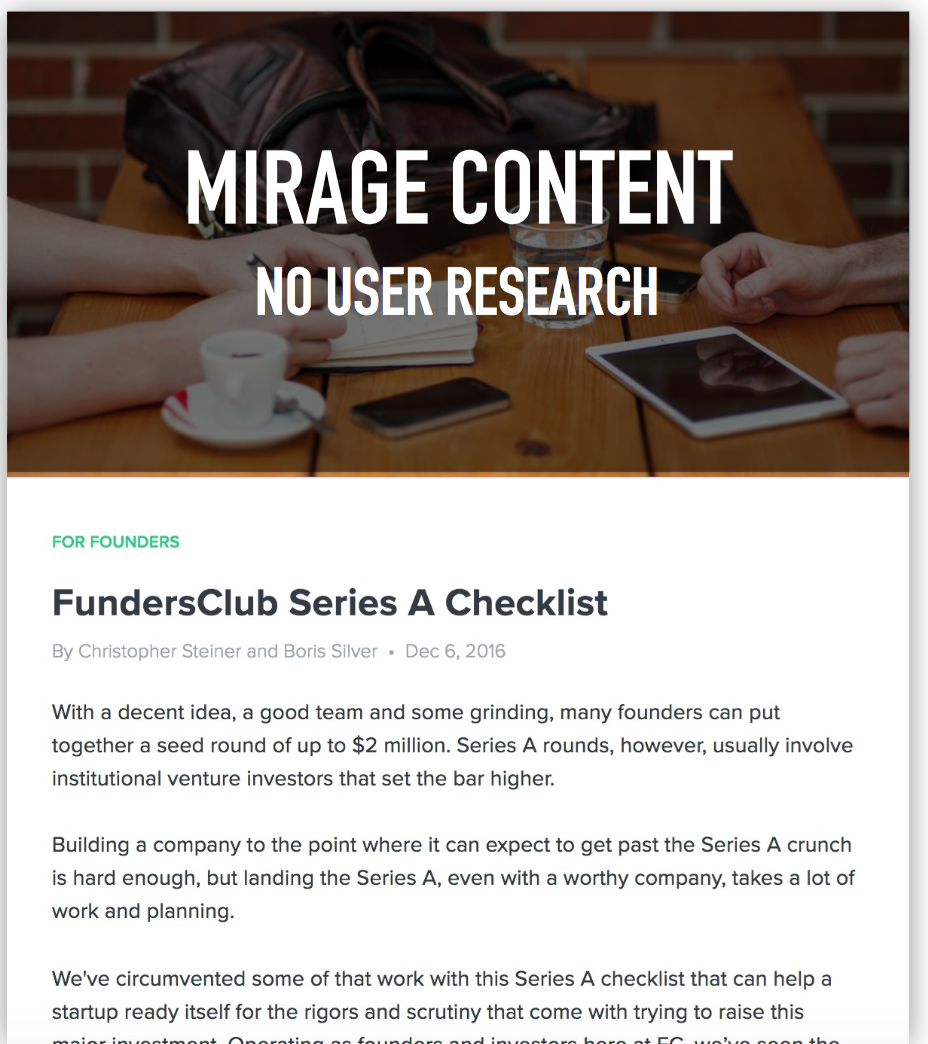
On the surface it looks like it would be a great article. It’s a checklist for companies trying to raise their series A round of funding. Knowing that Fundersclub invests in early stage companies, you’d think this would be a great article for their target audience.
But…
When we scrolled through this blog article, we noticed the advice given in the article didn’t match the audience who they identified as their best customers.
For example: these were some of the bullet points in the article.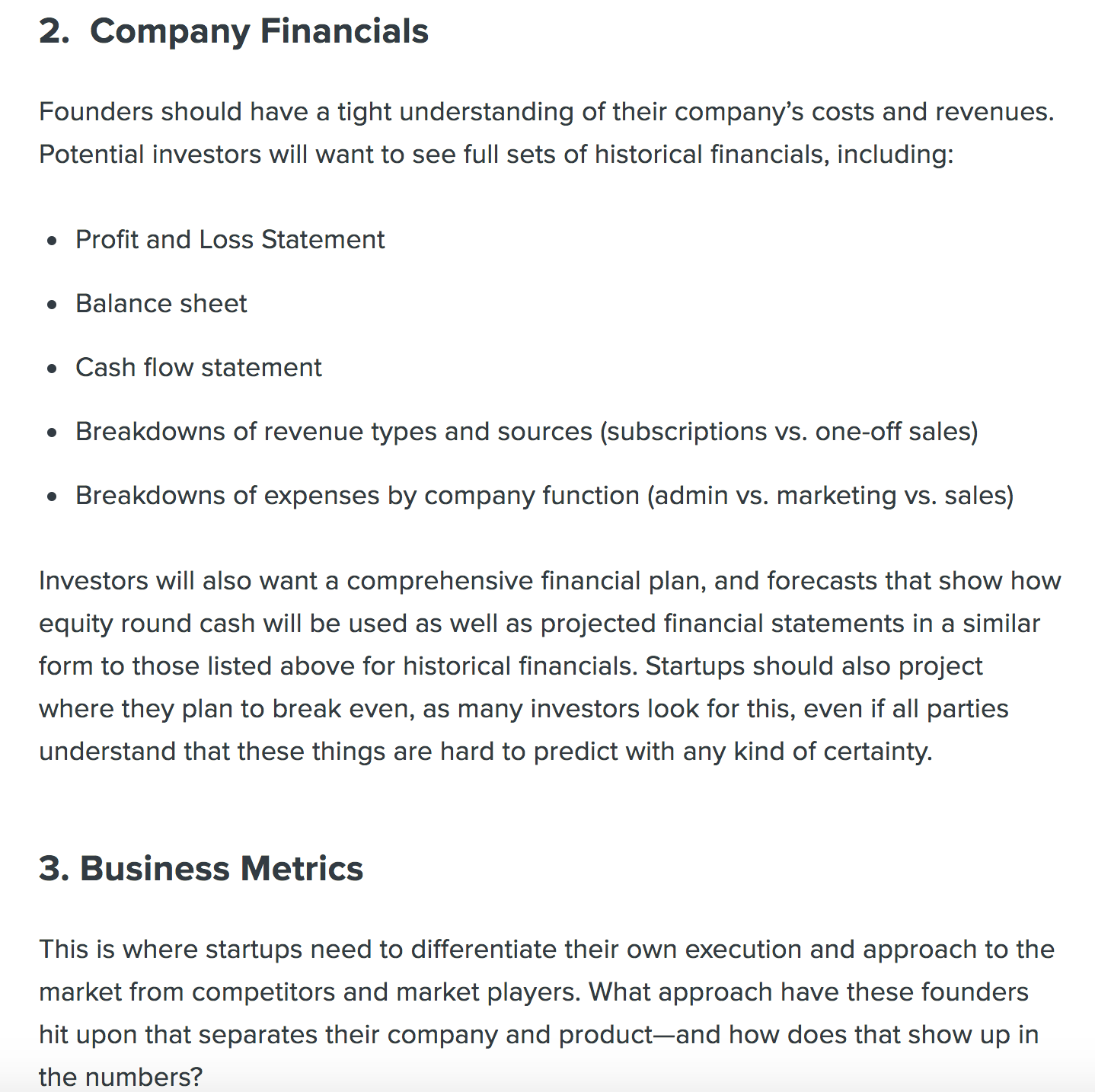
If you scroll up to their best customer — someone who is a serial founder and came out of a well known incubator — it’s clear that they know these basics about how to raise series A, they know series A rounds “usually involve institutional venture investors”, they know they need to present their financials, they know they need to practice their presentation, etc.
In fact, when we asked the Founders in the room (who were already funded) if this piece would be valuable to them, they all said no.
Fortunately, this exercise changed the direction of their content marketing strategy and Fundersclub has produced a ton of great pieces that are extremely valuable to their target audience.
Here are some examples:
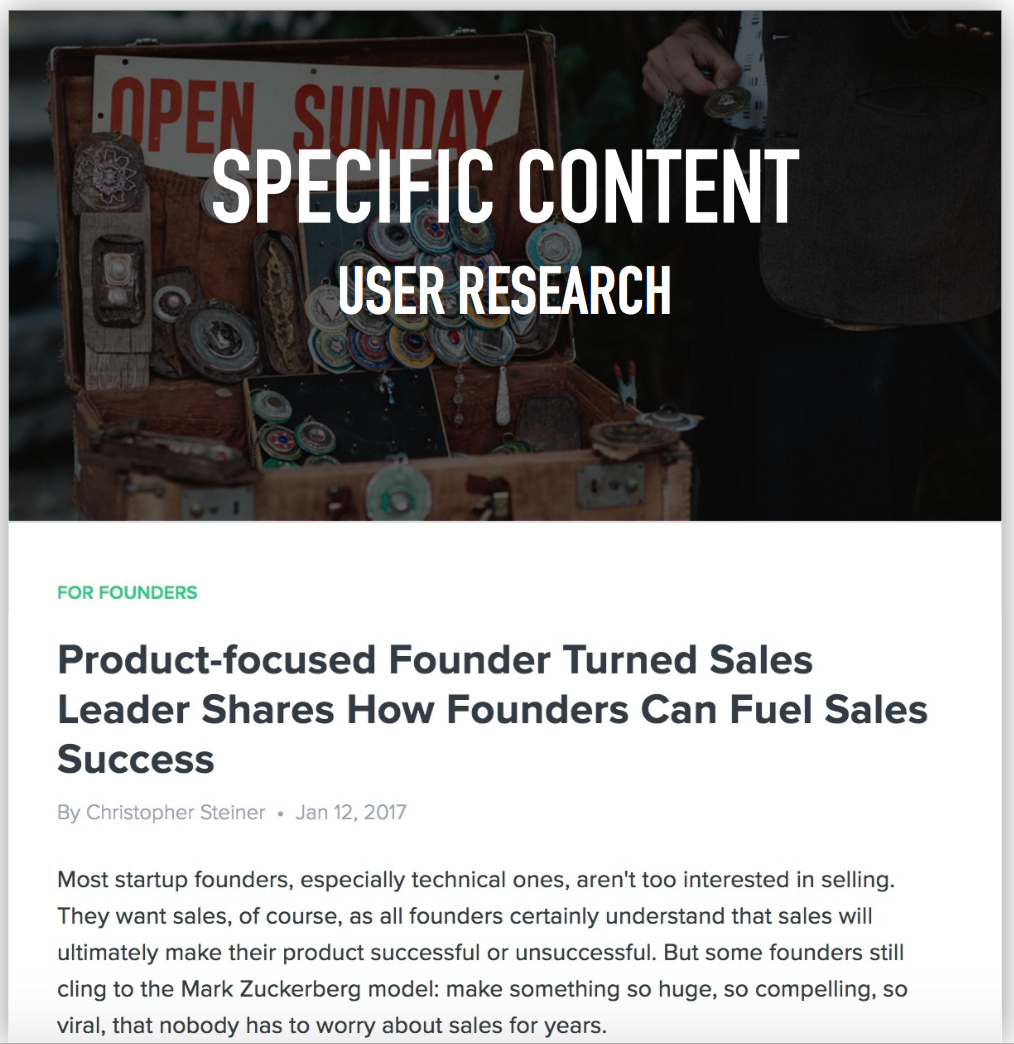
This post shares advice from technical founder who figured out how to sell inside of their company. This is a common challenge for technical Founders: how to also become a sales leader in the early stages in your company. It also uses an interview from someone experienced in the space, not just a content marketer Googling around and summarizing info.
Here’s another great article that directly targets something on a Founder’s mind that’s in their target market:
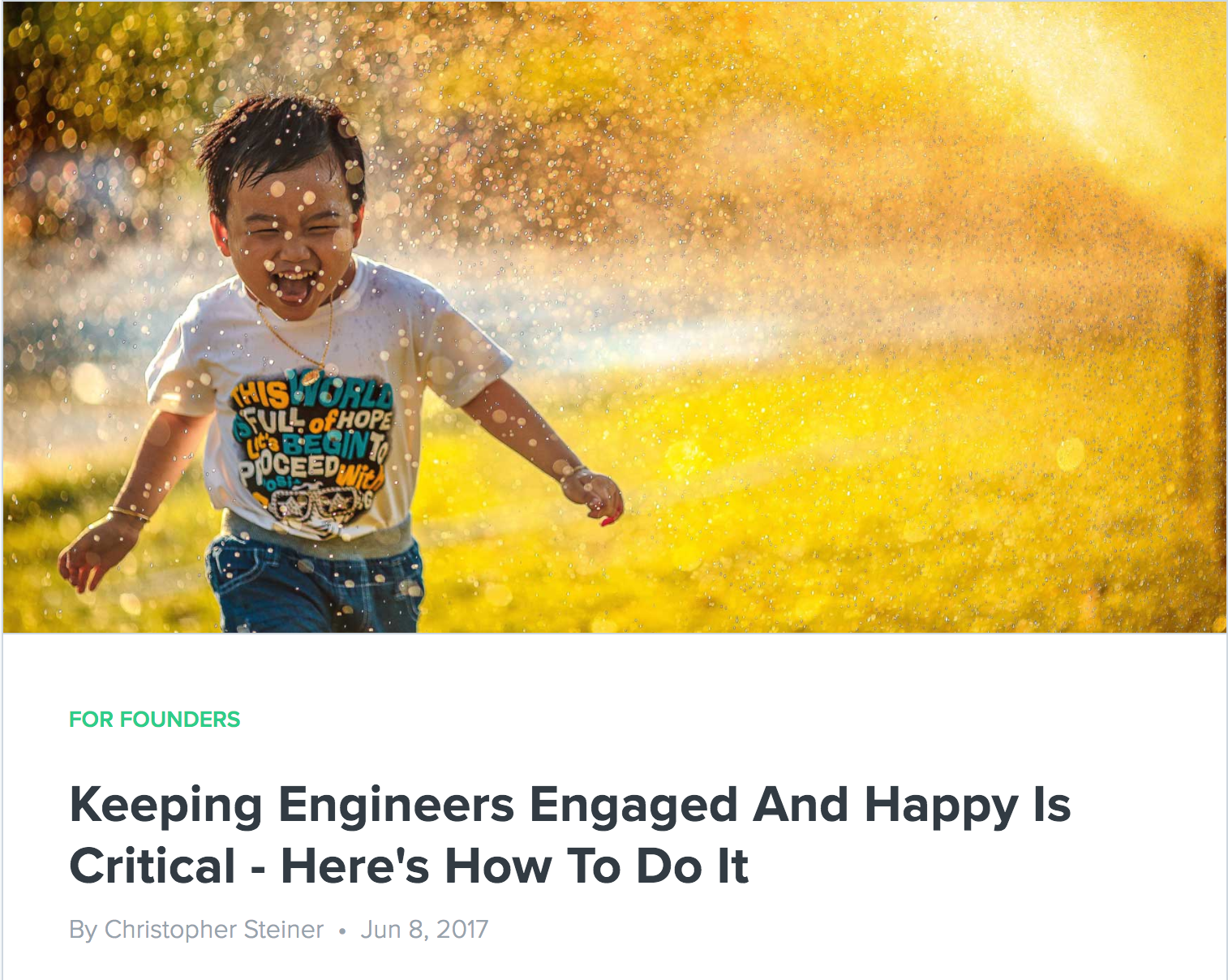
For tech startups, hiring engineers and keeping them happy is something that’s always top of mind. They interviewed Founders and Academics to produce this piece on how to keep engineers happy.
They also have a series of posts with opinions from experts which range from insightful to opinionated. These posts, by nature of being fueled by an expert’s opinion, avoid the pitfall of the “Series A” checklist where it’s clear the blog is out of sync with the needs of the reader.

Your Turn: Do you have an example of getting customer-content fit right (or wrong)?
It would be fun to get a discussion going about more examples of getting customer-content fit right or wrong.
Please share an example in the comments. If you don’t want to link to it, you can just describe it. It can be obvious or it can be subtle. It can be something you worked on or something that’s just driving you crazy.
Regardless of what it is, showing many different examples will help everyone see how customer-content fit can come in different shades and degrees across many different verticals.
Want to produce content for your business that has customer-content fit?
- Our Agency – You can learn more about having us run your content marketing here.
- Our Content Marketing Course – Individuals looking to learn these skills and become better marketers, consultants, or business owners can join our private course, taught via case studies, here or see this video walkthrough:

